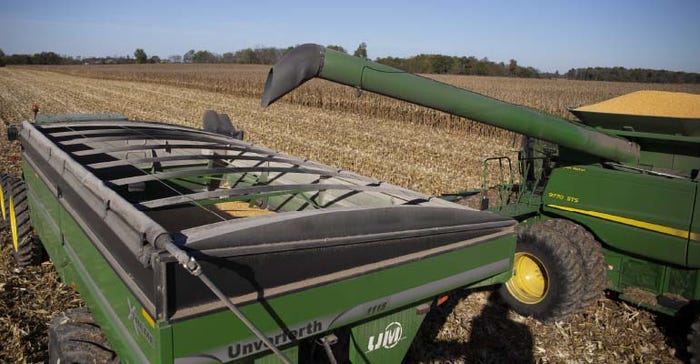September 1, 2022

Sponsored Content
Several thoughts come to mind when I start thinking about harvest. The long hours, the constant hustle, seeing the results of the season’s toils firsthand, and most importantly, turning the chapter on another season are just a few that come to mind. It’s important to prepare for the harvest season. It takes many pieces of equipment for harvest to flow quickly, efficiently, and safely. Trucks, tractors, grain carts, and augers must work in unison for a seamless harvest. Of course, the kingpin of the whole operation is the combine. Proper maintenance when it comes to combine prep cannot be understated. Here are seven tips to ensure tip-top combine performance.
1. GENERAL MAINTENANCE: We all know to do the simple things like changing the oil and checking chains, sprockets, belts, bearings, and pulleys. Make sure you get an eye on every component of the machine and confirm all adjustment motors and actuators (sieve, concave, fan, and rotor) work. If anything is in question, get it replaced. A little time spent now means a lot of time saved later.
2. THRESHING AND SEPARATION: Threshing and separation occur with the rotor and concave, so it’s important to ensure the threshing elements on the rotor are in spec. If you don’t know the specs, consult the owner’s manual for your machine. Then check the bars in the concave to confirm nothing is bent or missing. If some are, replace that section of the concave. Don’t forget to check the vanes surrounding the rotor’s end and verify they are in the correct position for the crop you will be harvesting.
3. CLEANING: If set wrong, this area of the combine could produce the most grain loss from the machine. It consists of the fan and the upper and lower sieve (chaffer/shoe). Check the fingers in the sieves and ensure there aren’t any bent or missing. Missing or bent fingers will change the airflow direction and might cause additional grain loss. It could also cause material (other than grain) to make it to the grain tank.
4. GRAIN HANDLING: In my opinion, this system includes tailings, clean grain conveyors, and unloading augers. Check the adjustment of both conveyors; if adjusted incorrectly, too much pressure will be applied to the cross augers. If too loose, the clean grain conveyor will grind the grain.
5. SPREADING: Regardless of the header width and the crop you’re harvesting, ensure that the chaff is spread to the machine’s full width. Check the machine owner’s manual for these specific adjustments. The tillage and planting pass will be much easier if you correctly spread the chaff and residue.
6. HEADS: Proper header angle will help limit butt shelling and improve crop flow. Ensure the deck plates run over the center of the snapping rolls and are correctly adjusted. Check the position of the cross auger for the platform and the corn head for the best crop transfer to the combine.
7. GRAIN LOSS: It’s time to get the machine to the field. Once the headlands are harvested, investigate the grain loss. As you are harvesting, have a team member throw a pan under the machine (this step might take a few tries). Once you succeed, operate the combine 20 ft. ahead of the pan and stop and lift the head. Then back the combine up, check the head loss, and look at the pan. This will give you an idea of where the loss is coming from. Grain, foliage moisture, and your combine settings will contribute significantly to loss, so reference your owner’s manual to correct the issues. Remember, two kernels per/ft.2 is equal to one bushel/A.

I hope you and your team have a safe and happy harvest!
Beck's - Farmers At Heart® - revolutionized the customer seed buying experience by remaining true to a foundation built on faith, family, and farming. Founded in 1937, Beck's appreciates the farmers who have helped them become the largest family-owned retail seed company and the third largest seed brand in the United States. The Beck family is now in its fifth generation of family members who work in the business to honor God and help farmers succeed. The Beck family and team of employees help farmers achieve success from generation to generation through authentic customer experiences, product diversity, seed quality, and performance. With a home office located in Atlanta, Ind., Beck's serves farmers throughout the Midwest and Mid-South. For more information about Beck's Superior Hybrids, Inc., visit www.beckshybrids.com.
About the Author(s)
You May Also Like




